DK Tasa, Inc.

|
Preface - Mineralogy and Optical Mineralogy | The Preface introduces the authors and the subject of mineralogy. Mineralogy, while usually associated with geology, is really a stand-alone discipline that weaves itself into such diverse fields as chemistry, art, forensic science, wine production, and health-related issues, to name only a few. |
Preface
see all chapters in the store 
|
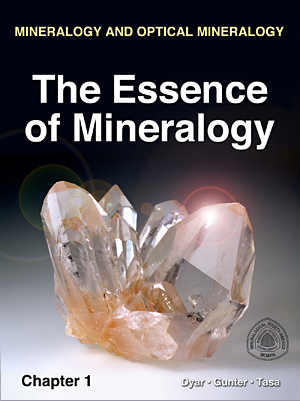
|
Chapter 1 - The Essence of Mineralogy | The content of The Essence of Mineralogy chapter is basically what we hope our students will remember 10 years from now. As we like to say in class, this is the guts of mineralogy. The point of Chapter 1 is to provide some fairly basic content that reappears on our learning spiral time and time again. |

|
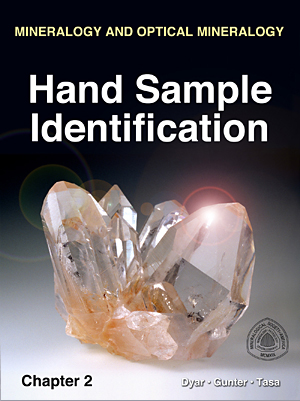
|
Chapter 2 - Hand Sample Identification | Color photographs and movies illustrate and demonstrate mineral identification. The Hand Sample Identification chapter uses the power of digital media to visualize mineral identification and make it easy to understand. |

|
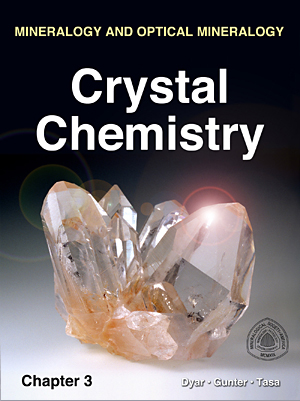
|
Chapter 3 - Crystal Chemistry | To understand mineral chemistry, we need to step back and review some fundamentals of chemistry. You probably studied some of this material as early as eighth grade, but don’t be tempted to skip the Crystal Chemistry chapter. You will find that mineralogists have a different perspective on this topic than chemists. |

|
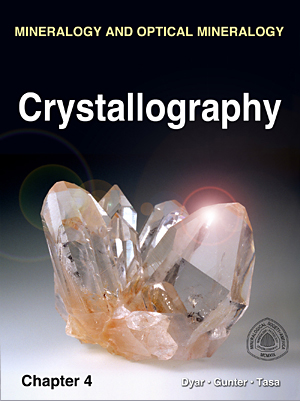
|
Chapter 4 - Crystallography | The Crystallography chapter is an introduction to the science of crystallography, which is a symbolic language for describing repeating patterns in 2-D, 3-D, or any dimension of space one wants. |

|
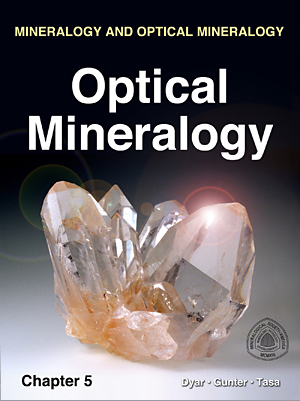
|
Chapter 5 - Optical Mineralogy | In the Optical Mineralogy chapter, we tie together the previous two chapters by interweaving them with optics, resulting in two related disciplines: optical crystallography and optical crystal chemistry. |

|
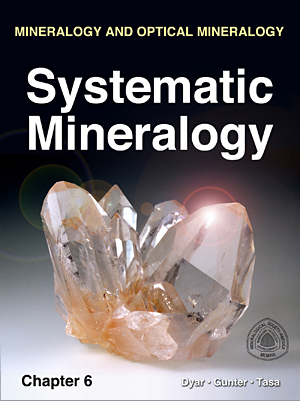
|
Chapter 6 - Systematic Mineralogy | Oxygen is the most abundant element in the Earth’s crust and silicon is the second; thus we’d expect many minerals to contain these two. In the Systematic Mineralogy chapter, we will summarize the commonly-occurring members of some of the silicate classes. |

|

|
Chapter 7 - Chemistry of the Elements | In the Chemistry of the Elements chapter, we explore the chemical elements that make up minerals. Starting with the Big Bang and the creation of the elements, we move on to atomic structure, electron orbitals, and ionic radii to understand how the elements combine to form minerals. |

|
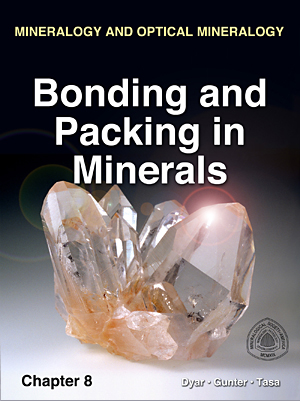
|
Chapter 8 - Bonding and Packing in Minerals | The Bonding and Packing in Minerals chapter introduces Linus Pauling’s “rules” that help us understand the ways atoms bond to each other to form polyhedra, and, in turn, how these polyhedra join together to form crystal structures. |

|
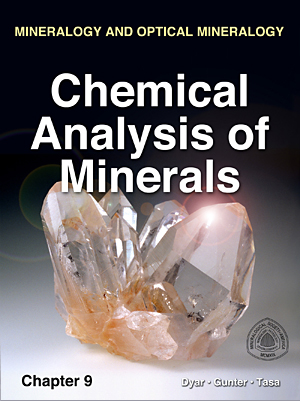
|
Chapter 9 - Chemical Analysis of Minerals | The Chemical Analysis of Minerals chapter provides an overview of the various analytical techniques used by mineralogists to determine the chemical makeup of minerals and emphasizes how each technique contributes information to help understand mineral composition. |

|
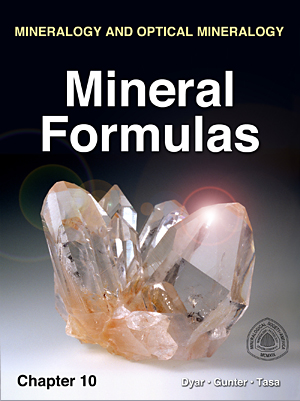
|
Chapter 10 - Mineral Formulas | In the Mineral Formulas chapter, information about how the chemical composition of a mineral is obtained using many different analytical techniques is presented. Each of these provide data in different units that is converted into a standard format for chemical formulas using “atoms per formula unit.” |

|

|
Chapter 11 - Introduction to Symmetry | In the Introduction to Symmetry chapter, information about how the crystal structure is determined by geometrical operations that occur naturally and can be explained mathematically is presented. These basic mathematical operations produce recognizable and repeatable patterns in two dimensions and in three dimensions. |

|
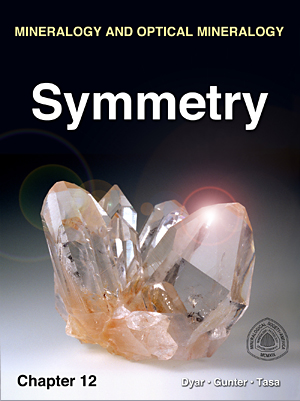
|
Chapter 12 - Symmetry | Given a basic understanding of symmetry operations, in the Symmetry chapter we now examine symmetry using stereographic projections. Two types of symmetry are discussed: point symmetry and space symmetry. Point symmetry relates to mineral shapes while space symmetry relates to the atomic arrangement of minerals. |

|

|
Chapter 13 - Mathematical Crystallography | The Mathematical Crystallography chapter explains how mathematical crystallography was developed to provide a unifying method for understanding crystal symmetry based on matrix algebra. The mathematics behind this internal symmetry is examined and explained in great detail. |

|

|
Chapter 14 - Representation of Crystal Structures | Physical models and computer generated 3D models are used to represent the atomic structure of mineral crystals. The Representation of Crystal Structures chapter explores how these models are constructed and explains the data required to build an accurate 3D model of a mineral crystal. |

|
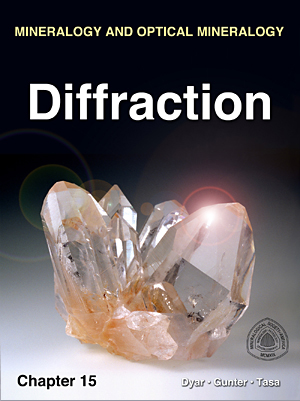
|
Chapter 15 - Diffraction | The Diffraction chapter explores diffraction, first as it occurs with light in nature, then as it occurs with x-rays in mineral crystals. X-ray diffraction and electron diffraction are used in mineral identification and are used to determine the atomic structure of mineral crystals. |

|
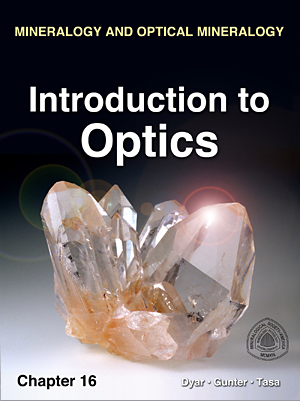
|
Chapter 16 - Introduction to Optics | The Introduction to Optics chapter explains everything you need to know about optics that can be learned at a macro scale (without a microscope) to prepare you for the study of optics at micro scales (with a microscope). |

|
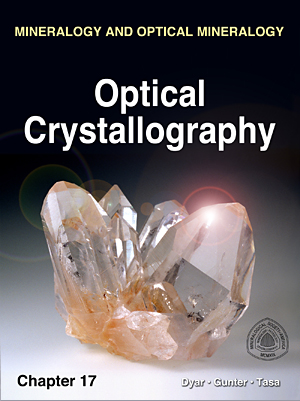
|
Chapter 17 - Optical Crystallography | In the Optical Crystallography chapter we relate the interaction of light with minerals to the study of mineral crystallography. With the fundamentals of optics (covered in Chapter 16) we can now understand the use of the Polarizing Light Microscope for mineral identification. |

|
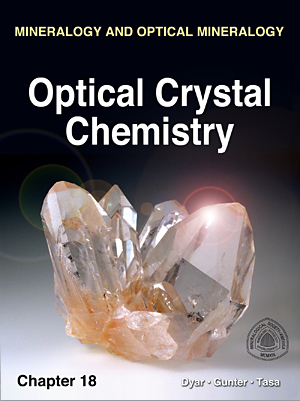
|
Chapter 18 - Optical Crystal Chemistry | In the Optical Crystal Chemistry chapter we relate the interaction of light with minerals to the study of mineral crystal chemistry. The chemistry of a mineral affects its optical properties, especially its refractive index. Refractometry is the technique used to measure the refractive indices of minerals. |

|
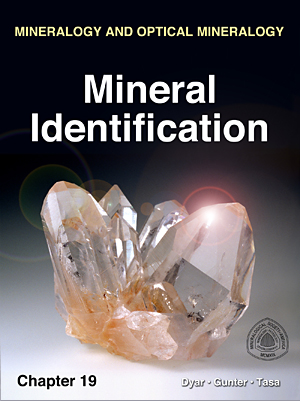
|
Chapter 19 - Mineral Identification | The Mineral Identification chapter discusses which analytical techniques are most useful in the identification of minerals and the common instruments available for determining mineral properties. Once the mineral properties are identified, a searchable mineral database is used to narrow the possible mineral species. |

|
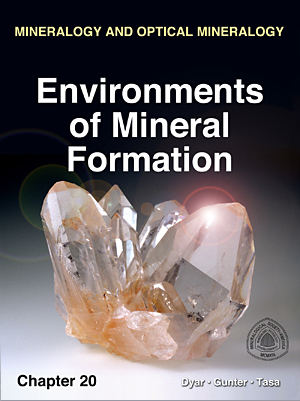
|
Chapter 20 - Environments of Mineral Formation | The Environments of Mineral Formation chapter explores why groups of minerals frequently coexist. Quantitative understanding of mineral associations became possible in the 20th century when it became feasible to approximate geological conditions in the laboratory. |

|
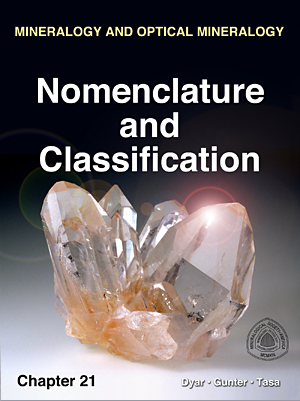
|
Chapter 21 - Nomenclature and Classification | In the Nomenclature and Classification chapter we will examine systems of classification of minerals using this terminology. Several common classification schemes are examined including: The Dana numbering system, the Strunz classification scheme, and a structural classification system. |

|
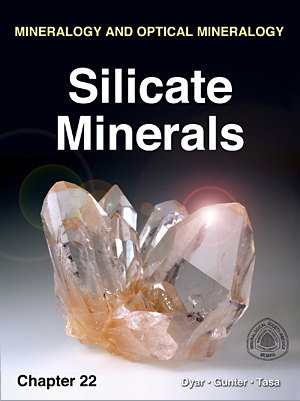
|
Chapter 22 - Silicate Minerals | The Silicate Minerals chapter explores all the silicate mineral groups by starting with the framework silicates in which silicate tetrahedra share all four corners, and then working through the standard classification schemes to the orthosilicates with isolated silicate tetrahedra. |

|
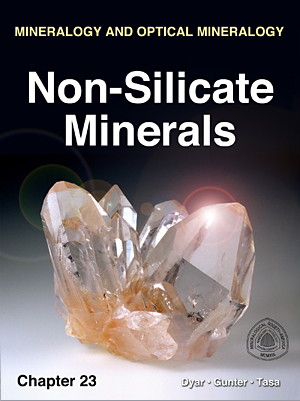
|
Chapter 23 - Non-Silicate Minerals | Using primarily a structural approach, the non-silicate minerals are examined. The Non-Silicate Minerals chapter discusses the minerals with the simplest structures and follows the order of the Dana and Strunz systems toward the more complex mineral structures. |

|
|
|
Mineral Database | Provides a quick, portable reference for students, educators, professionals, or anyone interested in minerals. Contains hand sample photos, photomicrographs, physical properties, crystal animations, 3D structures, and more for 300 common mineral species. |



|
|
See all of the other DK Tasa apps. |